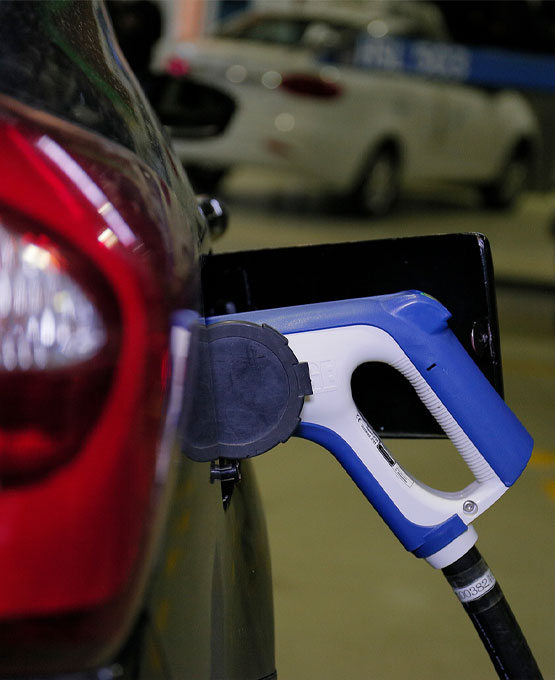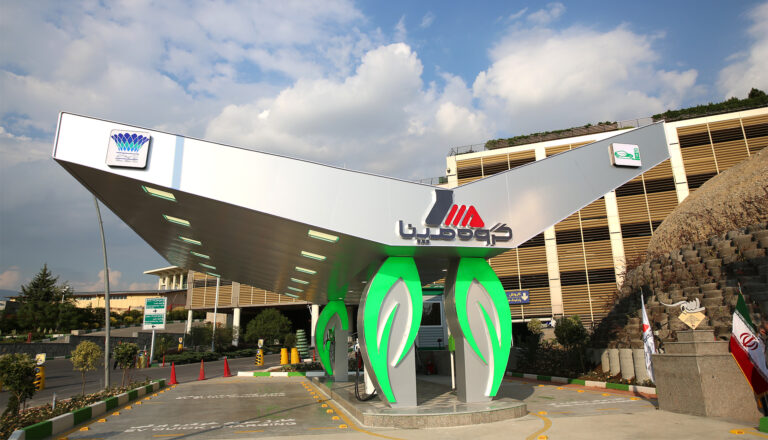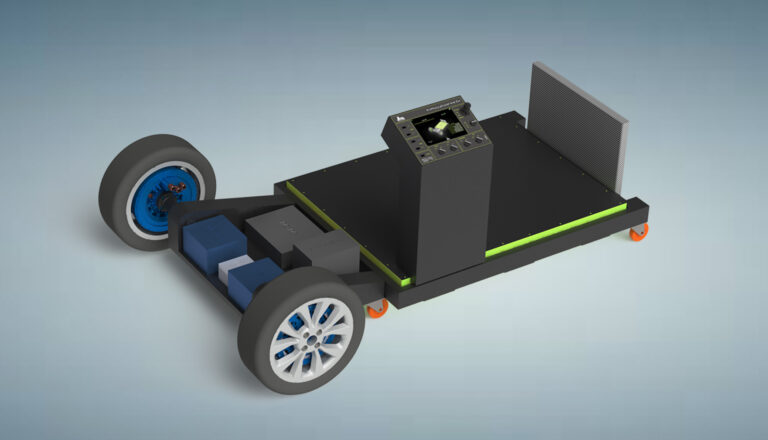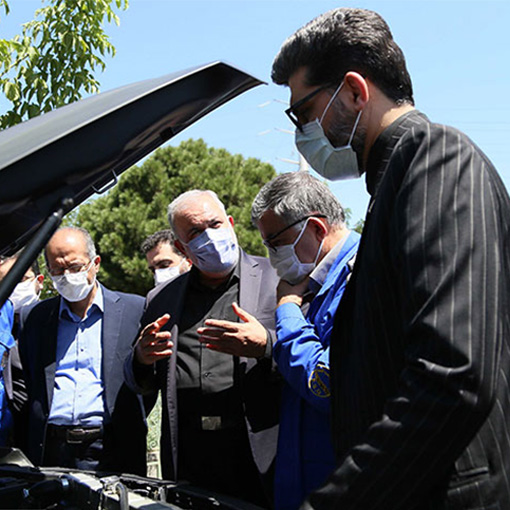
Mapna Group
Electrification in mapna
Transportation accounts for more than a quarter of worldwide carbon emissions, so it is in desperate need of a makeover. Electric vehicles can help us achieve our goals of moving to cleaner and more environmentally-friendly ways of transportation.
Electricity as an energy vector for vehicle propulsion allows for the substitution of a wide range of basic energy sources for oil. EVs offer a wide range of options, from electric buses to electric scooters; they also make less noise, which can contribute to the development of healthier communities with reduced rates of airborne diseases.
As a result, many countries around the world are working to extend their EV infrastructure in order to battle air pollution, reduce emissions and greenhouse gas emissions, and safeguard the environment.
According to a study by the European Union, electric and hybrid vehicles’ well-to-wheels efficiency is a factor of about three times higher than internal combustion engine vehicles, depending on how the electricity and power plants’ primary fuel are supplied. Thus, modification of urban transportation fleet at all levels – from locomotives to cars and motorbikes – will reduce pollution and subsidies while also increasing petroleum exports and earnings and creating more job possibilities.
Car electrification can also help the household economy, as covering the same distance with gasoline-powered cars in Iran costs 10 times more than filling up EV batteries.
In recent years, following a government policy to shift from fossil fuels to green energies, and in line with the global trend toward curbing pollution, MAPNA Group has prioritized the development of EV infrastructure.
Electrification in mapna
Services
Charging Stations

Developing electric vehicles entails provision of the necessary infrastructure. While EVs can be powered up at home, industry analysts and academics believe that a fast-charging infrastructure is essential to get beyond their current limited adoption.
In this regard, MAPNA Group opened Iran’s first electric vehicle charging station at Tehran’s iconic Milad Tower in May 2019.
Built over 700 square meters, the station in the northwest of the capital includes a 43-kilovolt alternating current (AC) charger plus a fast charger working under the CHAdeMO Protocol, a trade name of a quick charging method for electric vehicles which suits Japanese and Korean EVs such as KIA, Nissan, and Mitsubishi.
The station also includes a 4.7-kv slow charger as well as a 5.5-kv charger, which can be used by electric motorcycles.
Moreover, MAPNA Group has signed a contract with the Municipality of Mashhad for the electrification of the northeastern city’s transportation system. Accordingly, MAPNA Electric & Control Engineering & Manufacturing Company (MECO) is tasked with electrification of one diesel bus unit, conducting feasibility studies for electrification of the city’s BRT (bus rapid transit) system, and construction of three electric vehicle charging stations, one of which has been launched. The Group has signed an agreement with Oghab Afshan Manufacturing Co for development of electric buses for the electrification of the urban transportation fleet of Semnan and other Iranian megacities.
Electrification of Existing Vehicles

MAPNA Group has begun the electrification of existing passenger automobiles, and has designed and constructed an electric car prototype on one of the Iranian platforms for this purpose. Since electrification of existing cars is cost-effective, the Group is prepared to develop completely electric and hybrid vehicles on existing platforms.
MAPNA Group’s major aim right now is to convert existing models in the Iranian market, rather than manufacture electric cars. To put it another way, MAPNA’s goal is not to function as an automaker that manufactures the body and other parts, but to accelerate the process of infrastructure development, localization of the electrical and electronics sector of power, and systematization of electric vehicles.
In keeping with this plan, MAPNA Group has successfully electrified two popular models in the Iranian market: the Peugeot 405 and the Kia Cerato. The Kawei electric pickup truck is also a gasoline vehicle that MAPNA specialists have recently turned into an electric vehicle.
Developing Propulsion and Battery Pack Technologies
Development of propulsion technology and battery packs is another strategy pursued by MAPNA Group in line with its electrification outlook. The Group has so far developed various battery packs and electric propulsion equipment. In this way, Iranian automakers can launch electric cars by merely replacing gasoline platforms with electric production lines.
Electrification in mapna
Products
ELECTRIFICATION IN MAPNA
Investments
Industrial development, maintaining and developing the desired growth rate, completing the product and business portfolio, and managing the changing business environment as well as international conditions are the main elements encouraging MAPNA Group to enter the field of new businesses, including electrification.
Holding such a view, MAPNA has embarked on the electrification of automotive and rail transport industries, a move that can hugely contribute to the Group’s environmental responsibility. The conglomerate began its initial feasibility studies for the development of EV infrastructures in Iran in the early 2010s, finally gearing up to jointly produce EVs with two major Iranian automakers, namely SAIPA and Iran Khodro (IKCO).
MAPNA forged its first agreement with SAIPA in February 2019 to develop and commercialize electric vehicles in the hope of reducing fossil fuel consumption and curbing air pollution in megacities.
In August 2020, IKCO also expressed interest in joining hands with MAPNA to mass produce electric vehicles.
MAPNA is also planning to carry out feasibility studies for the electrification of transportation fleets of Kish Island, southern Iran.

